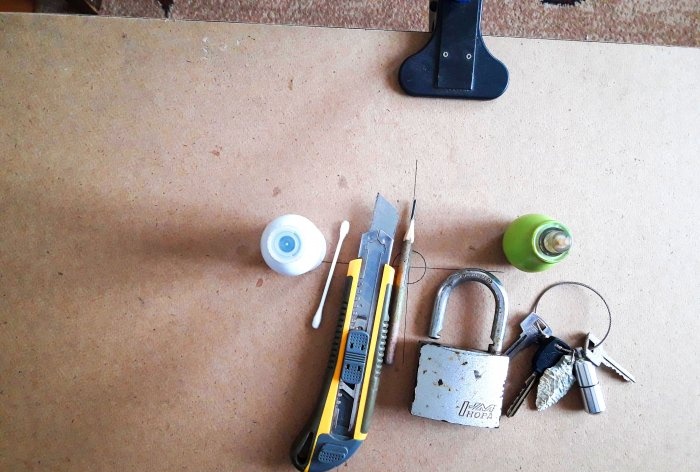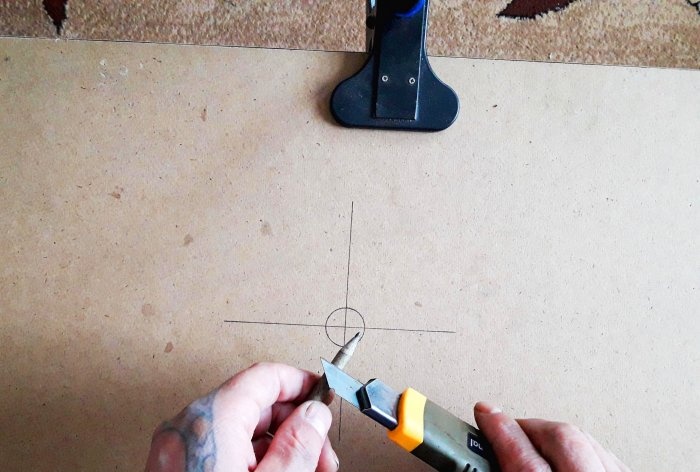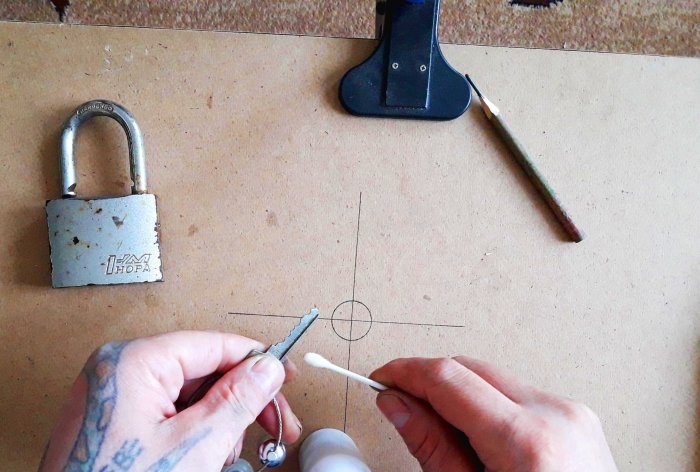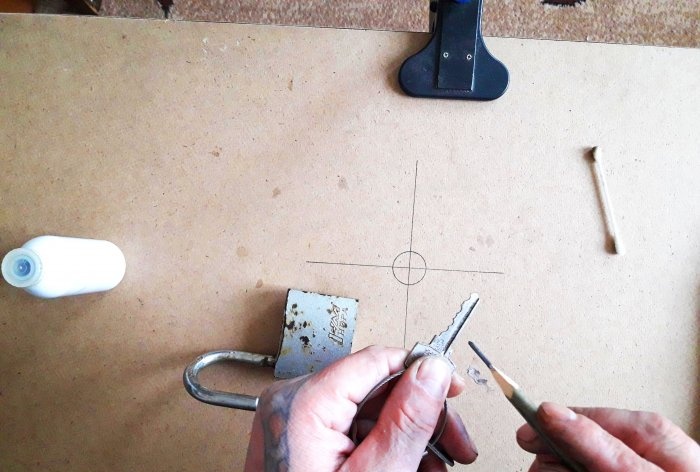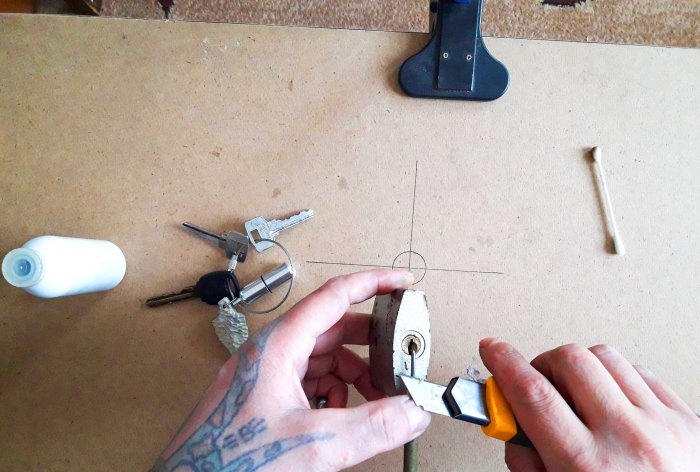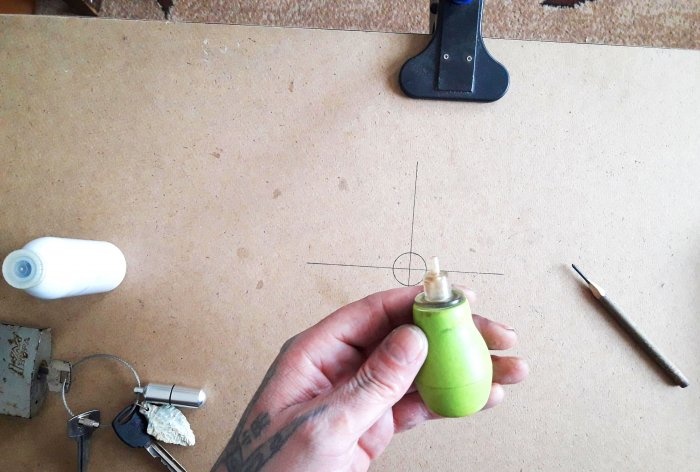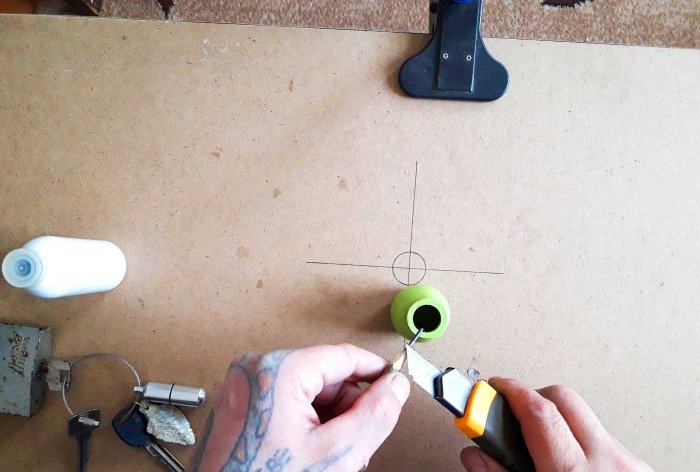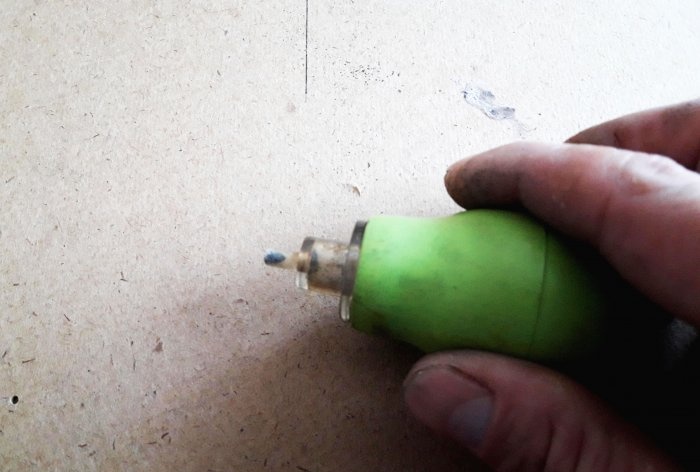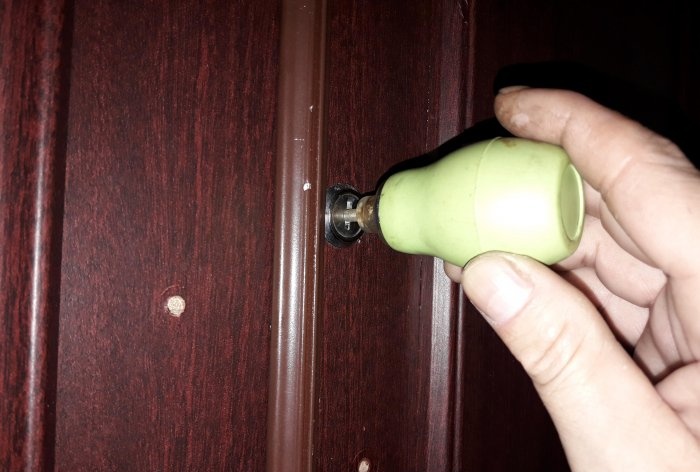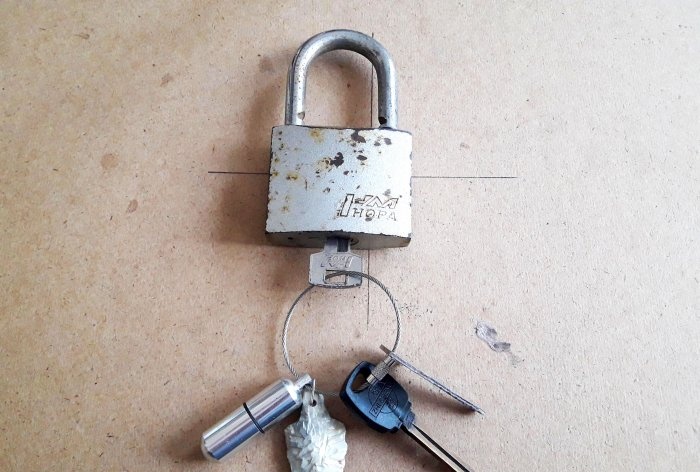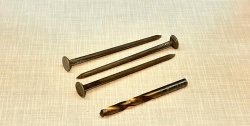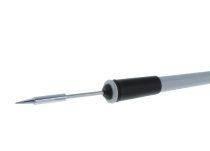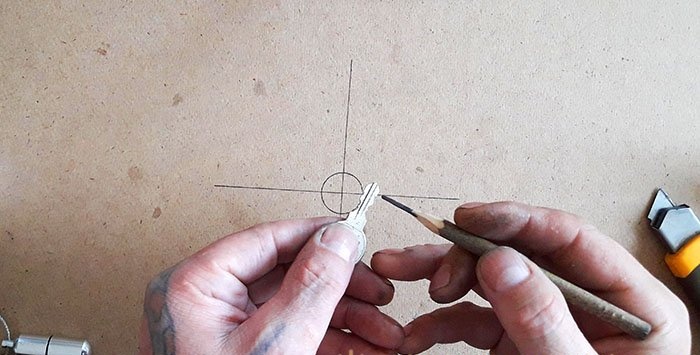
Small ones are something like locks. They will be discussed today. In this regard, graphite compares favorably with most lubricants designed for such purposes. Firstly, it does not freeze in any cold. Secondly, it does not dry out and does not evaporate in the heat. Thirdly, it will not be washed out of the castle well (for example, by rains) if the castle is padlocked. Well, in the end, it is not fluid, and will not drip, and oozing from the keyhole. Special graphite greases sold in hardware stores, I do not mean. They, for the most part, are made on the basis of a variety of oils and solid oils, and are not much different from other oil lubricants. In fact, everything is much simpler. As easy as pie. A set of tools and consumables will need the most minimal that everyone will find, without exception!
You will need:
- The pencil is simple. Preferably soft.
- Clerical knife.
- Solvent.
- Cotton swab.
- A syringe, or a small medical pear (this is for internal locks).
Lubricate the locks with graphite.
There are two ways to lubricate a lock. The first one is to thoroughly wipe the key itself with a graphite rod from a simple pencil, and how to use it in the lock, that is, to develop it. And the second is to grate the graphite rod with a file, or scrape it with an office knife, and fill it up in the castle well. Abundantly applied to the key graphite is enough to lubricate the internal mechanism of the lock. But we will use both options at once. For sure. But there is another small snag; how to deliver crushed graphite inside the castle, if this lock is cut into the door. Dismantling the lock, taking out the larva to lubricate it is too long and tedious. This is where the syringe helps us out. I took a small medical pear, the principle of operation is not much different. So, let's start with the old, rusty, half-oiled padlock that I locked from the street. More precisely, removed from the barn. On this very thing, I will try the work and effectiveness of graphite lubrication, since the oil with which I previously lubricated it, dried and weathered long ago. First, of course, you need to thoroughly dry it, and then wipe the lock with a dry rag. While the lock mechanism dries from condensation, we will prepare a simple pencil. More precisely, the core of it. We will need to free two or three graphite rods from the wooden shell of the centimeter. To do this, with the help of a clerical knife, cut off the above amount of a wooden shell.
Next, rub the key to the lock with this rod. But at first it would be nice to clean the key from rust, dust and dirt with a solvent and a cotton swab.
Rub should be so that the entire surface area of the key was covered with graphite. Except for the holder, of course. We especially carefully lubricate the grooves and teeth of the key. So that they remain graphite dust formed from friction.
Now we take the dried out lock, we stick a key into the well, and we turn it several times. And a little more we cut graphite into the keyhole itself; we put the rod to the well, at a slope, and we scrape graphite inward.
A lot is not necessary. We also insert the key, and develop, as follows, the lock mechanism.I saw a way and easier; they simply insert a graphite rod into the well, and break it off. Then they crush it with a key inside the castle. But I did not dare to crank up such an experiment - you never know ... it’s better not to be too lazy and grate. Now let's figure out the internal lock. The lock I chose in the cabinet door, although new, but I have never lubricated it. The principle of action is not much different from the previous one. Only in this case, we crushed graphite not into the well, but into a syringe, or into a small medical pear, which is usually used to pump out snot from the nose of a sick pet.
We scrape graphite with a clerical knife inside the pear, put on the lid, close the hole with your finger, turn it over, and with light clicks we shake the grated graphite closer to the hole.
Now we lean the hole of the pear to the keyhole, and with a sharp press on the sides of the pear, we send graphite dust into the castle.
We also lubricate the key with graphite, and develop a mechanism.

That's all. Thus, you can save yourself from wiping oil smudges from the well, after lubrication. In addition, graphite grease lasts much longer than oil.
